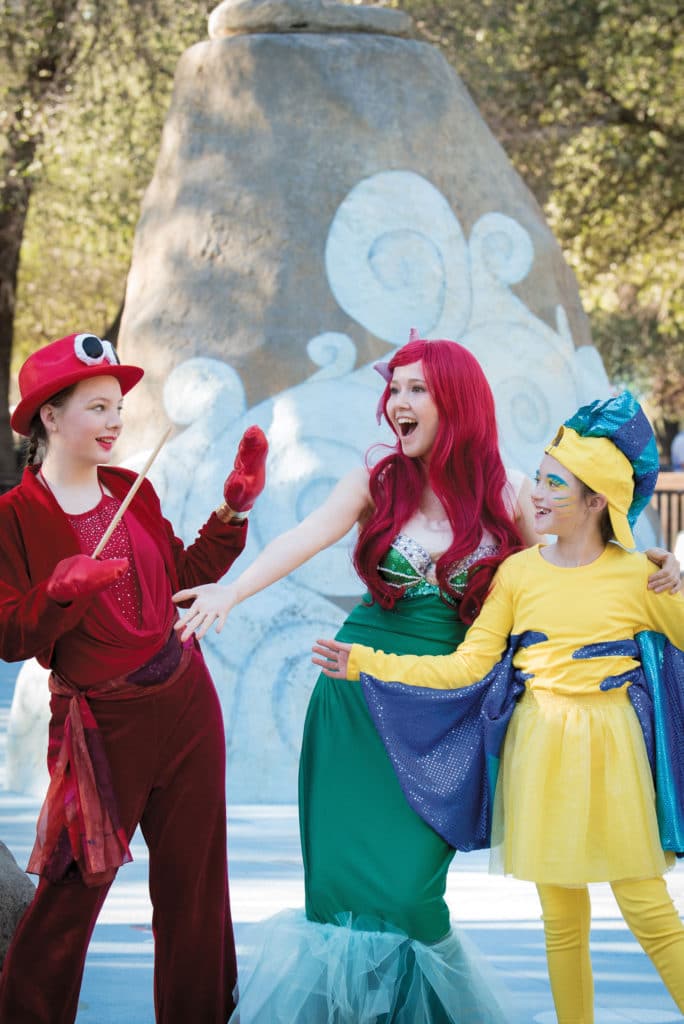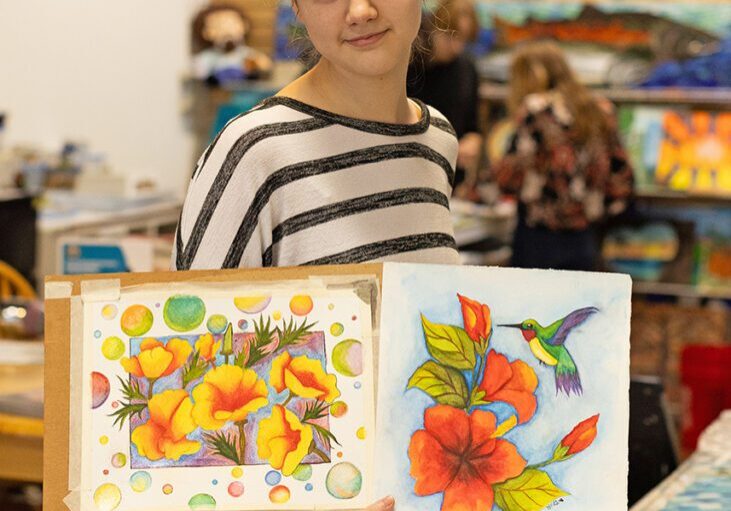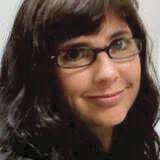 In a highly competitive world that places a significant premium on easily measured achievements, creative arts are sometimes considered expendable. Yet, experts stress that the arts are just as beneficial to a child’s brain development and learning as traditional academics.
In a highly competitive world that places a significant premium on easily measured achievements, creative arts are sometimes considered expendable. Yet, experts stress that the arts are just as beneficial to a child’s brain development and learning as traditional academics.
Enhanced development, academic performance, and self-confidence
Recent brain research confirms what teachers have always known. The arts enhance academic performance. In its published study, “Champions of Change: The Impact of the Arts on Learning,” the Arts Education Partnership (aep-arts.org) says, “When well taught, the arts provide young people with authentic learning experiences that engage their minds, hearts, and bodies and nurtures the development of cognitive, social and personal competencies.”
Diverse, highly valued skills that contribute to future success
Many assume that a family’s investment in the arts is an extravagance, thinking that it’s nice to have an artistic child, but professional success must be the real goal. Fortunately, the arts develop skills highly valued in the workplace. Former U.S. Department of Education Secretary Richard Riley has said, “If young Americans are to succeed, they will need an education that develops imaginative and tough-minded thinking. The arts powerfully nurture this ability over other areas of learning.”
Better still, in an increasingly diverse global world, exposure to the arts helps children appreciate different points of view. Famed Broadway composer Stephan Swartz explains, “The arts are about increasing sympathy, increasing in people the ability to see things from other people’s point of view, and understanding that the world is not just from your own narrow perspectives, but from the perspective of people from other cultures.”
Exposing a child to the arts need not be time-consuming or expensive. Most communities offer enhancement programs at little or no cost. It is also easy to reinforce concepts at home. There are different types of creative arts that children enjoy. Here are the benefits of each and suggestions for how to incorporate them at home.
Music forms new connections
Listening to, singing and playing music has an undeniable effect on reasoning, language, math and social behavior. Exposure to music can form new, permanent connections in a child’s brain. Aimee Carter, the owner of Delightful Sounds, teaches music to children with developmental delays. She says that all her music students experience substantial developmental, emotional and social gains. Music director Tom Tietjen says that his students enjoy greater self-awareness, cooperation skills and an appreciation of different cultures.
Parents can easily play music or make music at home, but don’t be afraid to take your child to the symphony. Many offer child-friendly matinees and instrument petting zoos that expose a child to different instruments. It’s fun to watch a child’s reaction when he instinctively gravitates toward one.
Creative drama
Drama can include dramatic role-play, story enactment or viewing live theater. Such exposure enhances a child’s imagination, builds his self-confidence and improves memory and reading skills. Drama students learn to comfortably express their emotions in a group setting, a skill that becomes important as they approach adulthood.
At home, you can encourage pretend play. Many kids instinctively act out their favorite stories. Consider a family talent show to allow even shy children to shine in the safety of their own homes. Check out local theater offerings for kids.
Visual arts makes even boring subjects fun
Exposure to painting, drawing, sculpture, photography and architecture helps develop a child’s fine motor and critical thinking skills. Artist and teacher Virginia Larrea-LaTourrette sees improvements in her students’ self-discipline, organizational skills and self-esteem. She says that art can make academic subjects more accessible, “Children learn that art is connected with all learning so even boring subjects can be fun.”
It’s easy to encourage the visual arts at home because kids love to draw, sculpt and build. Allow children to use an old phone to take photographs and then choose one for framing. Look for family nights at your local museum and ask your child to describe what he likes about his favorite pieces.
Literary arts foster curiosity
Exposure to or creating written works, poetry, and narratives encourage self-exploration and intellectual curiosity. Despite geographic or socioeconomic barriers, literature can teach kids to appreciate the experiences of others while also recognizing and honoring their own abilities and backgrounds.
Literary reading is in a steep decline, with the most dramatic drop off happening in the youngest age groups (arts.gov/sites/default/files/RaRExec.pdf.)
Read the classics together as a family. Swiss Family Robinson, Through the Looking Glass, Treasure Island, and Little Women are popular choices. Know that many publishers offer classic stories with age-appropriate text. Another option is poetry written specifically for children. Encourage your kids to write their own stories and poems.
With all the offerings and choices available, consider incorporating the arts into your family’s daily routine. Even if your child does not become the next Shakespeare, Mozart or Picasso, these small and easy efforts yield substantial benefits.
Here are some virtual resources to help enhance your child’s exposure to the creative arts.
Language / Dramatic Arts:
E-Learning for Kids has an archive of activities to expose children to literature, with sections on literary devices, poetry, drama, and prose. en.e-learningforkids.org/language-arts/
Storyline Online has a vast collection of videos that feature celebrities and teachers reading or acting out popular stories and books. A popular example is Kevin Costner’s wonderful reading of Catching the Moon. http://www.storylineonline.net/library/
Visual Arts:
Kidsite.com offers many fun art-related activities broken down by category. http://www.kidsites.com/sites-edu/art.htm
KinderArt® features artistic lessons for children of all abilities, sorted by medium or technique. kinderart.com/art-lessons-by-medium/
Music:
Baby Mozart allows kids to listen to tracks by different classical composers like Tchaikovsky, Mozart, Bach and Beethoven. babymozart.org/classical-music/
San Francisco Symphony’s Fun and Games with Music teaches children about different types of music and instruments in a fun, gaming format. http://www.sfskids.org/listen/
Posted in: Art & Music
Comment Policy: All viewpoints are welcome, but comments should remain relevant. Personal attacks, profanity, and aggressive behavior are not allowed. No spam, advertising, or promoting of products/services. Please, only use your real name and limit the amount of links submitted in your comment.
You Might Also Like...
Give Dance A Chance: 21 Reasons To Try Consistent Classes
Don’t be fooled by glittery costumes and false eyelashes – competitive dancers are athletes who deserve to be taken just as seriously as participants in any other sport. Dance at […]

Opportunities for Teens to Get Involved with Art and Artists
Exciting opportunities for teens to get involved with the arts abound in the North State. Here is just a sample of the extraordinary arts activities available in our region designed […]

Ballet: A Fairytale Friendship
Jake Bevens wasn’t very interested in ballet at a young age; he favored his activities in gymnastics instead. But when one of his coaches insisted that he try ballet to […]
The Hills are Alive with the Sound of Music: Chico Community Choirs to Perform in Salzburg, Vienna and Prague this Summer
Some of Chico’s best vocalists are heading for the hills – the Alps, that is – on an 11-day tour of Prague, Salzburg and Vienna this summer that will include […]




